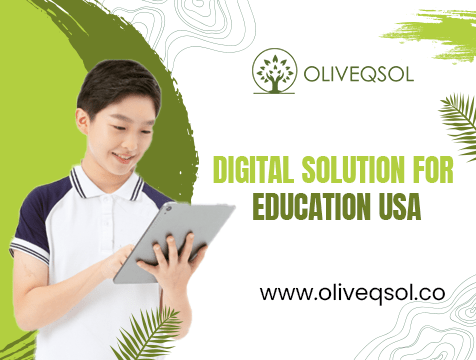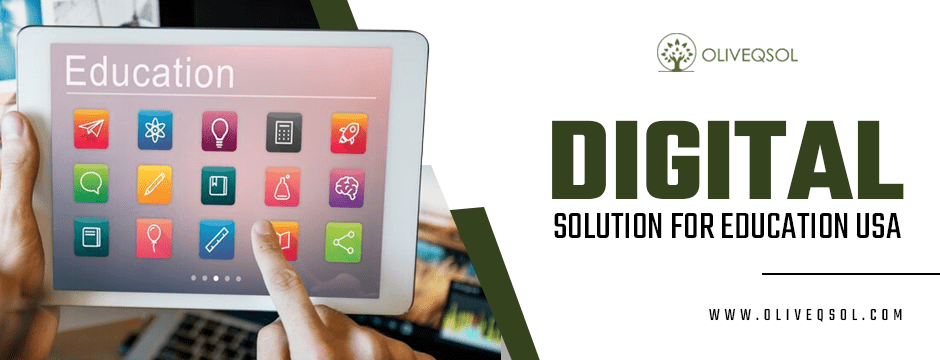How Digital Learning Solutions Bridge Educational Gaps

How Digital Learning Solutions Bridge Educational Gaps
Education is the cornerstone of personal and societal progress, yet access to quality learning remains unequal in many parts of the world, including the United States. Disparities in resources, location, and access to qualified teachers have long been barriers to equitable education. However, digital learning solutions have emerged as a powerful tool to bridge these gaps and ensure a more inclusive learning environment. Let’s delve into how digital education solutions in the USA are transforming learning landscapes, addressing inequalities, and creating opportunities for students of all backgrounds.

Understanding Educational Gaps
Educational gaps stem from various factors, such as economic disparities, geographic isolation, limited infrastructure, and differences in learning needs. For instance, rural schools in the USA often face challenges like underfunding, fewer teachers, and outdated materials. Similarly, students with special needs or those learning English as a second language may struggle in traditional classrooms that lack personalized learning resources.
The COVID-19 pandemic further exposed and widened these gaps, making it clear that traditional education models alone cannot address the diverse needs of today’s learners. This is where digital solutions for education in the USA have stepped in, revolutionizing the way knowledge is imparted and accessed.
How Digital Learning Solutions Address Educational Gaps
Digital education solutions in the USA provide innovative ways to overcome challenges in accessibility, personalization, and engagement. Here’s how they bridge the divide:
1. Expanding Access to Quality Education
A key advantage of digital learning is its capacity to overcome geographical limitations. Students in remote areas now have access to the same quality of education as their urban counterparts. Platforms offering online courses, virtual classrooms, and e-learning modules ensure that location is no longer a barrier.
Example: Students in rural schools can take advanced placement (AP) courses online, participate in STEM workshops via virtual labs, and access digital libraries for research and learning.
2. Personalized Learning Paths
Every student learns differently, and digital education solutions in the USA cater to individual needs through adaptive learning technologies. By analyzing a student’s strengths, weaknesses, and pace, these platforms create customized learning experiences.
Example: AI-powered tools like Khan Academy’s personalized dashboards enable students to focus on areas where they need improvement, ensuring better retention and understanding.
3. Inclusive Learning for All Abilities
Digital solutions foster inclusivity by addressing the needs of students with disabilities. Tools such as text-to-speech software, closed captioning, and customizable interfaces make learning accessible to all.
Example: Apps like Bookshare provide audiobooks and digital texts for visually impaired students, enabling them to study independently.
4. Bridging the Digital Divide
While the digital divide—the gap between those with and without internet access—remains a concern, initiatives like providing devices and subsidized internet are helping bridge this gap. Digital learning solutions are being designed to work offline, ensuring uninterrupted learning.
Example: Google’s Chromebooks and offline-capable tools allow students in underserved areas to continue learning without relying solely on internet connectivity.
5. Engaging and Interactive Learning
Conventional teaching approaches frequently struggle to maintain student engagement. Digital tools like gamified learning, augmented reality (AR), and virtual reality (VR) make education immersive and enjoyable.
Example: Platforms like Kahoot! and Duolingo turn learning into a game, motivating students to achieve their educational goals through fun and rewards.
6. Providing Professional Development for Educators
Teachers play a crucial role in bridging educational gaps. Digital learning solutions equip educators with the tools and training they need to deliver effective instruction.
Example: Platforms like Coursera and edX offer professional development courses, enabling teachers to enhance their skills and adopt modern teaching methods.
Real-World Examples of Impactful Digital Learning Solutions
K-12 Education
In K-12 schools, digital education solutions in the USA have introduced tools like smartboards, e-learning apps, and virtual field trips. For example, the introduction of Google Classroom during the pandemic enabled schools to maintain continuity in learning through assignments, feedback, and virtual discussions.
Higher Education
Universities and colleges are leveraging Learning Management Systems (LMS) like Blackboard and Canvas to provide students with on-demand access to course materials, online lectures, and collaborative tools. These platforms allow flexibility for working students and those pursuing education remotely.
Corporate Training
Digital solutions are not limited to formal education. Corporate training programs in the USA increasingly rely on e-learning modules, simulations, and gamified training to upskill employees and bridge knowledge gaps within organizations.
Challenges and Future Opportunities
Challenges
Digital Divide: While progress is being made, unequal access to technology and the internet remains a hurdle.
Cost Barriers: Implementing advanced digital tools can be expensive for underfunded schools and institutions.
Teacher Training: Effective use of digital solutions requires teachers to be adequately trained.
Opportunities
Government Support: Increased funding and initiatives to provide technology in schools can further bridge gaps.
Emerging Technologies: The use of AI, AR, and blockchain in education holds immense potential to revolutionize learning.
Collaborations: Partnerships between EdTech companies, non-profits, and governments can accelerate the adoption of digital solutions.

Why OliveQSol Is Your Partner in Digital Learning
At OliveQSol, we believe in transforming education by providing cutting-edge digital solutions for education in the USA. Our mission is to make learning accessible, engaging, and inclusive for everyone.
We collaborate with schools, universities, and corporations to design personalized digital learning strategies tailored to their unique needs. From creating adaptive e-learning modules to implementing advanced LMS solutions, we’re committed to bridging educational gaps. With a focus on innovation and results, we ensure that every student and educator can achieve their fullest potential.
Whether you’re looking to modernize your classroom, improve teacher training, or make learning accessible to underserved communities, OliveQSol is here to guide you every step of the way.
Conclusion
Digital learning solutions are no longer a luxury; they are a necessity for bridging educational gaps and ensuring equitable access to quality education. By leveraging innovative technologies and adaptive tools, digital education solutions in the USA are transforming the way students learn and thrive.
As we move forward, it is imperative to address challenges like the digital divide and ensure that every student, regardless of their background, can benefit from these advancements. With continued innovation and collaboration, the dream of an inclusive and equitable education system can become a reality. Let’s embrace the power of digital learning to shape a brighter, more educated future for all.
Want to find out more on digital solutions for education in the USA? Visit us at OliveQsol.


